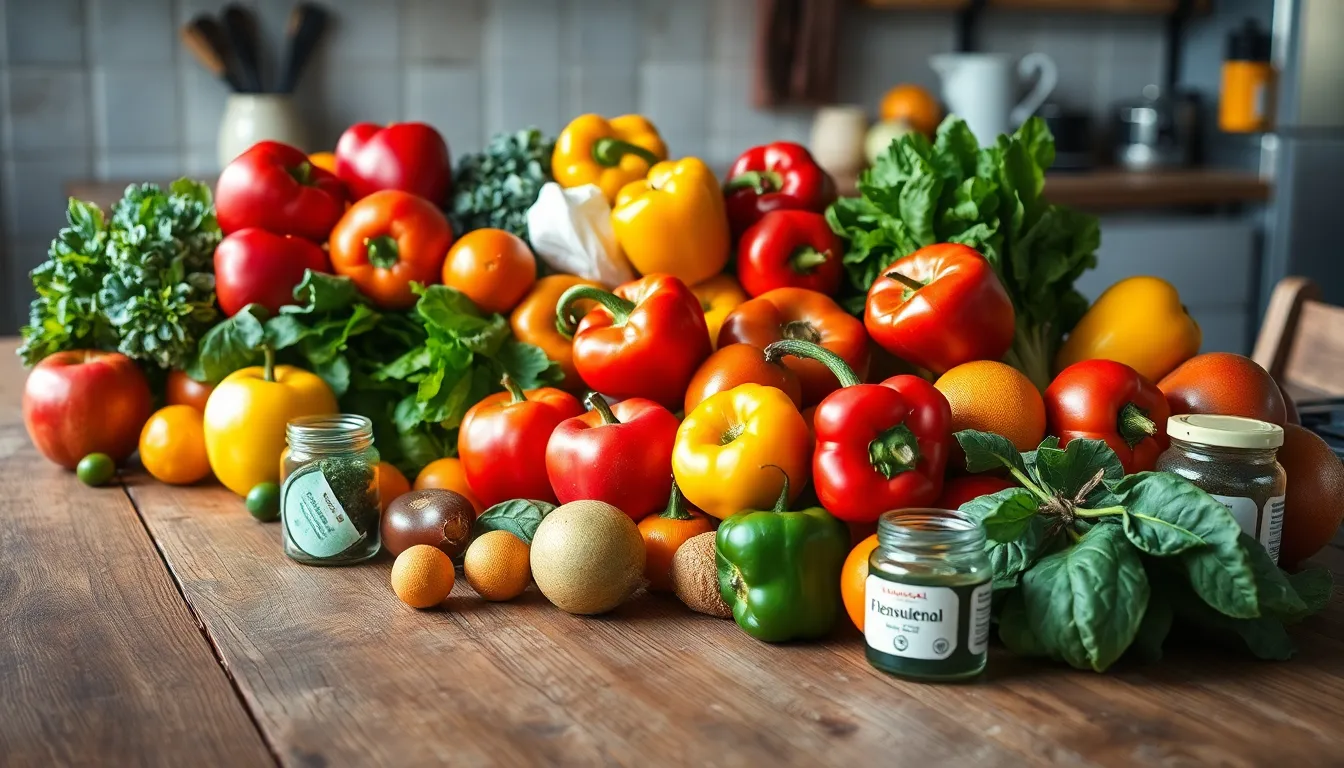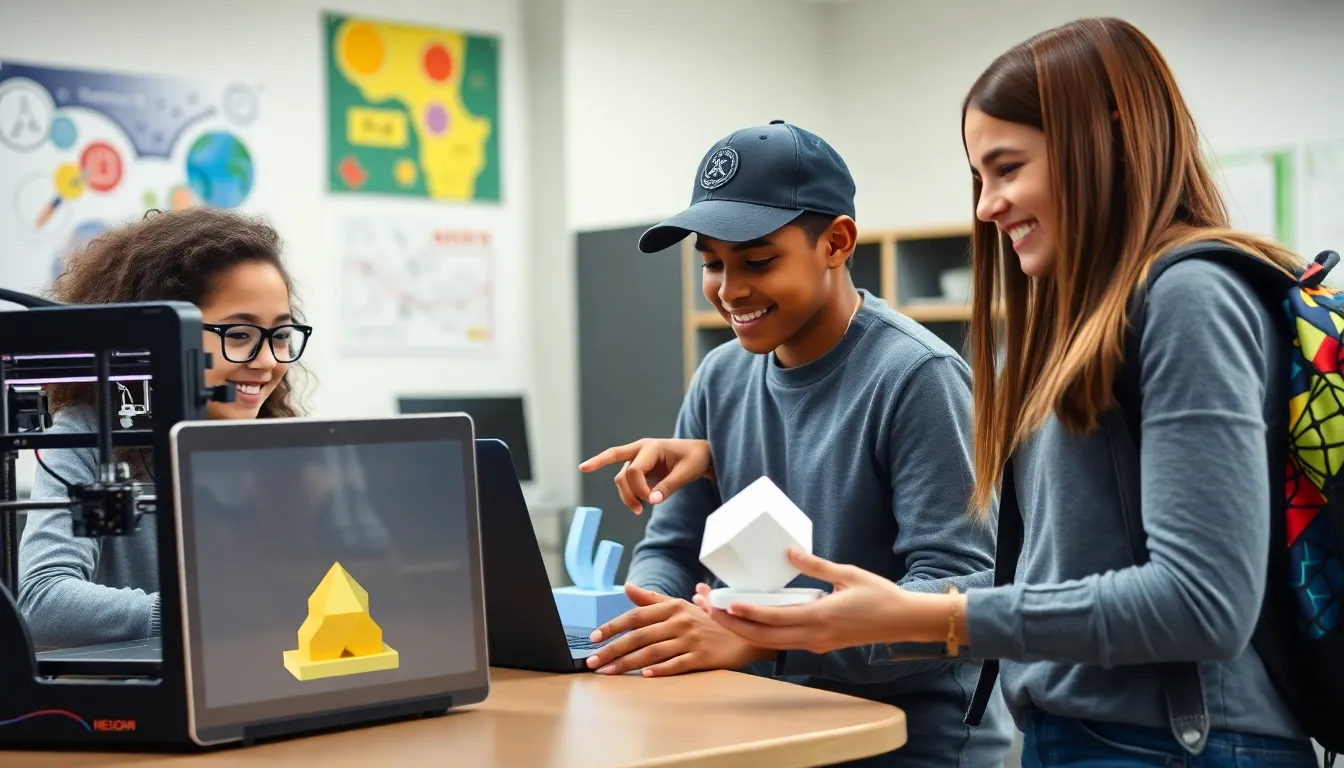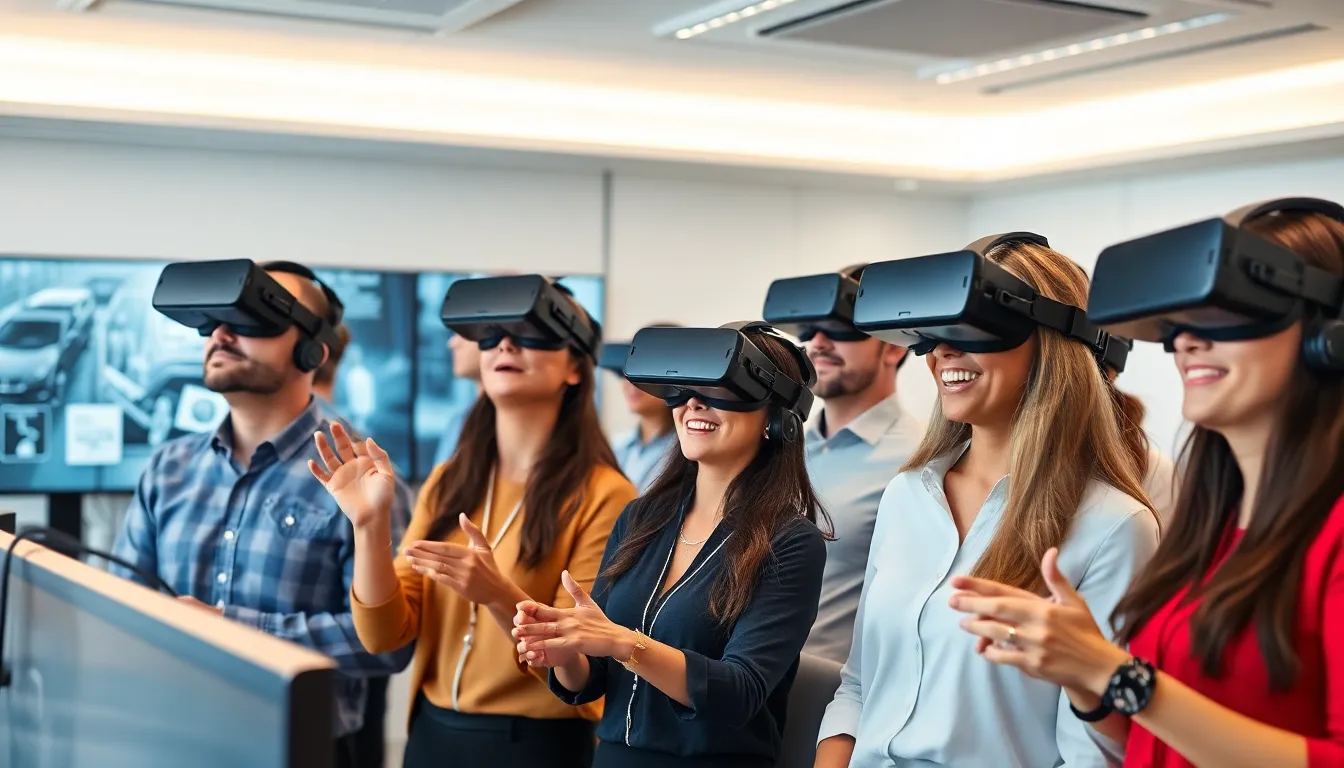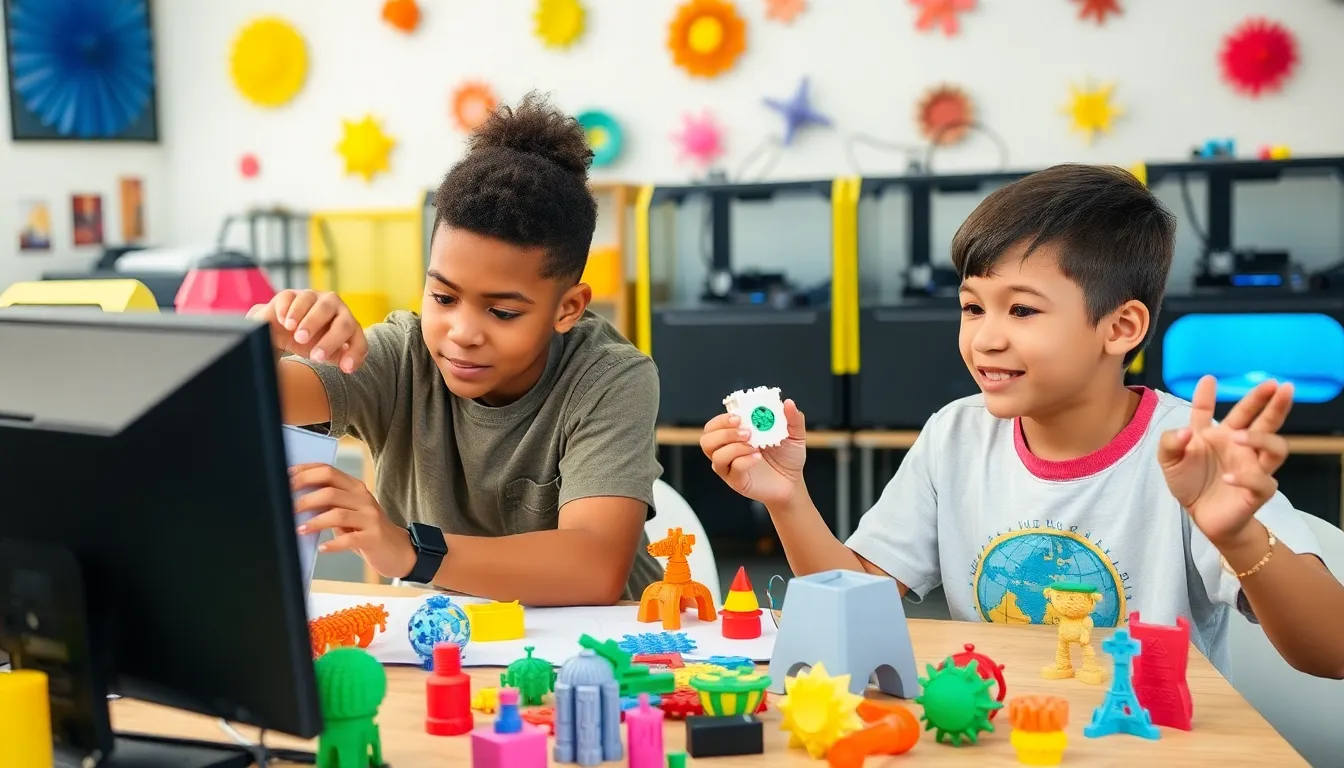The world of 3D printing is evolving at an astonishing pace, captivating hobbyists and professionals alike. With countless options available, choosing the right 3D printer can feel overwhelming. Each model boasts unique features, capabilities, and price points, making it essential to understand the differences before making a decision.
In this article, readers will explore a detailed comparison of popular 3D printers, highlighting their strengths and weaknesses. Whether someone is a beginner looking for an affordable option or a seasoned expert seeking advanced technology, this guide aims to simplify the selection process. By breaking down key aspects like print quality, speed, and usability, it helps users make informed choices that align with their specific needs.
Table of Contents
ToggleOverview of 3D Printers
3D printers come in various models, each tailored to different applications and user needs. Understanding the types and features of these printers is essential for making an informed choice.
Types of 3D Printers
- Fused Deposition Modeling (FDM): FDM printers extrude melted thermoplastic filament layer by layer. They are popular for their affordability and ease of use, making them suitable for beginners.
- Stereolithography (SLA): SLA printers use a laser to cure liquid resin into solid objects. They provide high precision and detailed finishes, making them ideal for applications requiring intricate designs.
- Selective Laser Sintering (SLS): SLS printers utilize a laser to fuse powdered materials into solid parts. This technology supports complex geometries and can use various materials, including plastics and metals.
- Digital Light Processing (DLP): DLP printers employ a digital light projector to layer resin. They offer high-speed printing and excellent detail, suitable for producing clear and precise models.
Key Features to Consider
- Print Quality: Assess the resolution and layer height specifications, as these determine the detail and smoothness of the printed object.
- Print Speed: Evaluate the printer’s speed in millimeters per second. Faster printers enhance productivity, especially in professional environments.
- Build Volume: Consider the maximum dimensions of printed objects. Larger build volumes accommodate bigger projects and models.
- Material Compatibility: Check what materials the printer can utilize. Diverse material options expand the printer’s range of applications.
- Ease of Use: Look for user-friendly interfaces and setup processes. Beginners benefit from intuitive controls and comprehensive user guides.
- Support and Community: Consider the availability of technical support and the active community of users. A strong user community offers valuable resources and advice.
Popular 3D Printer Models
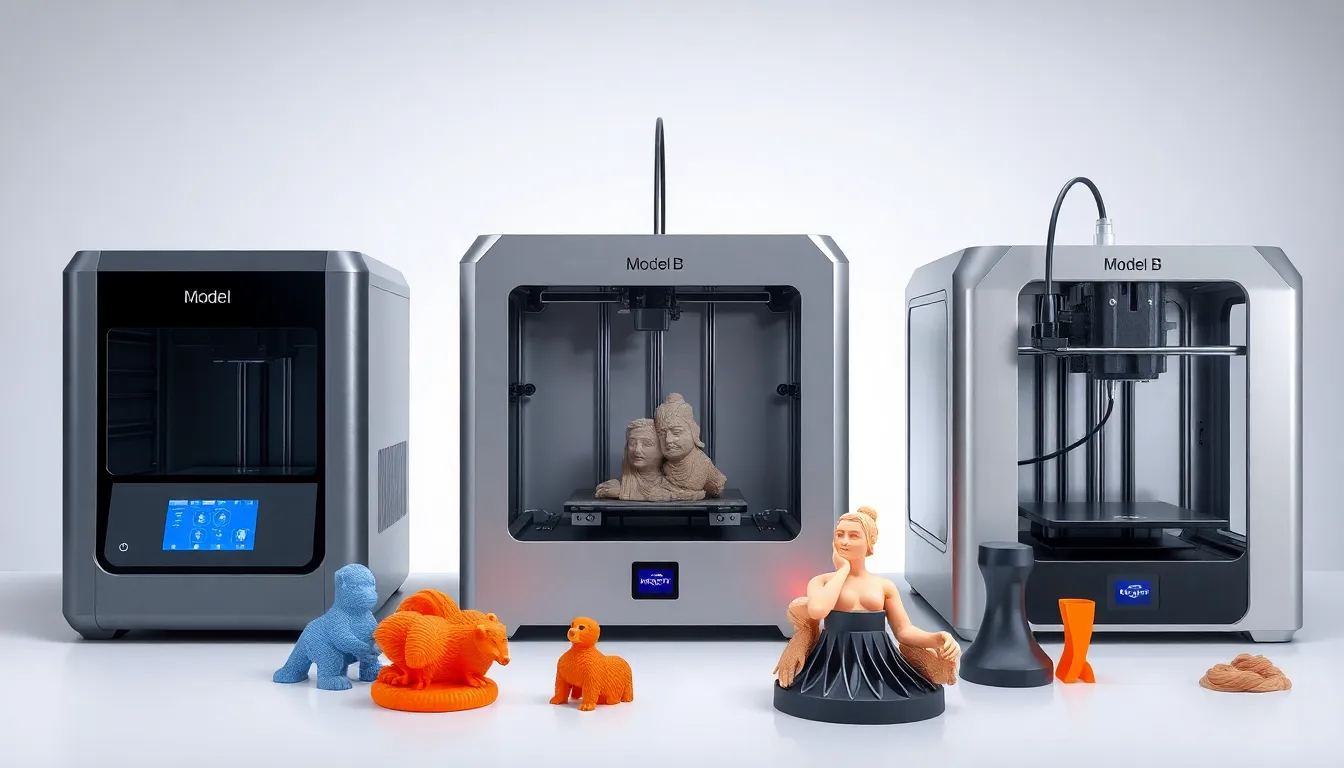
Several 3D printer models stand out in the market, each catering to specific needs and preferences. Below is an analysis of three popular models that exemplify different technologies and functionalities in 3D printing.
Model A Analysis
Model A, known for its Fused Deposition Modeling (FDM) technique, features a print resolution of up to 50 microns, ensuring accurate detail. Its build volume measures 250 x 210 x 210 mm, accommodating a variety of prints. Users appreciate its material compatibility, working seamlessly with PLA, ABS, and PETG. An intuitive touchscreen interface enhances usability. Model A’s average print speed reaches 60 mm/s, making it an efficient choice for hobbyists and professionals alike.
Model B Analysis
Model B utilizes Stereolithography (SLA) technology, offering superior print quality with resolutions as fine as 25 microns. With a build volume of 145 x 145 x 175 mm, it appeals to those requiring precision for intricate designs. This model excels in producing smooth surfaces and detailed finishes. Compatible with a range of resins, users benefit from high material versatility. Model B operates at a print speed of 30 mm/h, suited for detailed projects rather than high-volume production.
Model C Analysis
Model C employs Selective Laser Sintering (SLS), targeting industrial applications. Its build volume of 300 x 300 x 300 mm allows for larger builds. This model achieves high accuracy with layer resolutions around 100 microns. Users gravitate towards its efficiency with nylon and TPU materials, enabling strong, durable prints. Model C’s print speed can reach 100 mm/s, facilitating quick turnarounds in production environments. Its user-friendly software simplifies the printing process, making it accessible to various skill levels.
Performance Comparison
Performance varies significantly among different 3D printers. Key factors such as print quality, speed, efficiency, and material compatibility play crucial roles in determining a printer’s suitability for specific applications.
Print Quality
Print quality differs across models and technologies. Fused Deposition Modeling (FDM) printers, like Model A, typically achieve resolutions of 50 microns, suitable for general printing tasks. In contrast, Stereolithography (SLA) printers, such as Model B, excel with resolutions up to 25 microns, producing highly detailed and intricate designs. Selective Laser Sintering (SLS) printers, represented by Model C, deliver precision suited for industrial uses, focusing on mechanical strength and surface finish. Users must match their desired detail level and final application with the appropriate printer technology.
Speed and Efficiency
Speed and efficiency also vary by printer type. FDM printers demonstrate faster speeds, averaging 60-100 mm/s, making them ideal for quicker prototypes. SLA printers, while slower at around 30-50 mm/s, compensate with high-quality outputs, allowing for detailed prints in shorter run times. SLS printers generally operate at moderate speeds, around 10-25 mm/s, primarily due to the complexity of the laser sintering process. Users seeking rapid production must consider the trade-off between speed and quality based on their requirements.
Material Compatibility
Material compatibility is essential for achieving desired results. FDM printers work with a variety of thermoplastic filaments, including PLA, ABS, and PETG, offering flexibility for different projects. SLA printers primarily utilize photopolymer resins, enabling high-resolution prints but limiting material options to certain applications. SLS printers are compatible with nylon and other powdered materials, supporting robust mechanical properties essential for functional parts. Users must evaluate which materials match their print goals and printer capabilities to ensure successful outcomes.
Cost Analysis
Cost considerations play a critical role in selecting a 3D printer, impacting both the initial investment and ongoing maintenance expenses. Evaluating these costs enables users to make financially sound choices tailored to their specific printing needs.
Initial Investment
Initial investment varies significantly among 3D printer models, influenced by technology type and features. FDM printers typically start around $200, offering accessibility for beginners. Mid-range FDM models can reach $1,000, providing enhanced capabilities, while high-end FDM systems may exceed $3,000. SLA printers generally cost between $300 and $4,000, with entry-level options appealing to hobbyists and advanced models suitable for professional use. SLS printers represent the top tier, often priced from $5,000 to over $100,000, targeting industrial applications that demand precision and large-scale production. Users must align their budget with their intended use and printing frequency to ensure optimal investment in a printer that meets their requirements.
Maintenance Costs
Maintenance costs vary based on printer type and usage intensity. FDM printers generally incur lower maintenance costs, requiring occasional nozzle cleaning and filament replacement, with filament priced between $20 and $50 per kilogram. SLA printers necessitate more frequent maintenance, including resin refills priced around $30 to $150 per liter and replacing UV light sources, which can add to overall expenses. SLS printers usually demand higher maintenance efforts due to their complex machinery, with powder materials costing $50 to $300 per kilogram and necessitating thorough cleaning processes. Users should factor in these ongoing costs when selecting a printer, as they impact the long-term financial commitment associated with 3D printing projects.
Choosing the right 3D printer can be a daunting task given the multitude of options available. By understanding the strengths and weaknesses of different models and technologies users can make informed decisions that align with their specific needs. Factors like print quality speed and material compatibility play crucial roles in the overall performance of a printer.
Budget considerations also significantly impact the choice. Aligning the initial investment and ongoing maintenance costs with intended use ensures a satisfying 3D printing experience. With careful evaluation and consideration of these elements users can confidently select a printer that meets their requirements and enhances their creative projects.


